new posts in all blogs
Viewing: Blog Posts Tagged with: dianne Ochiltree, Most Recent at Top [Help]
Results 1 - 7 of 7
How to use this Page
You are viewing the most recent posts tagged with the words: dianne Ochiltree in the JacketFlap blog reader. What is a tag? Think of a tag as a keyword or category label. Tags can both help you find posts on JacketFlap.com as well as provide an easy way for you to "remember" and classify posts for later recall. Try adding a tag yourself by clicking "Add a tag" below a post's header. Scroll down through the list of Recent Posts in the left column and click on a post title that sounds interesting. You can view all posts from a specific blog by clicking the Blog name in the right column, or you can click a 'More Posts from this Blog' link in any individual post.

By: Kathy Temean,
on 10/3/2013
Blog:
Writing and Illustrating
(
Login to Add to MyJacketFlap)
JacketFlap tags:
Hazel Mitchell,
Free Fall Friday,
Shawna JC Tenney,
dianne Ochiltree,
First Page Critiques,
John Cusick,
Editor Emily Seife,
Katherine Tegan,
Scholastic,
opportunity,
Kristi valiant,
Add a tag
CALL FOR ILLUSTRATIONS: Please remember to send in your illustrations for October. It is a great way to get seen and keep your name out there to get noticed. Send them to Kathy(dot)temean(at)gmail.com with October Illustrations in the subject area. Please submit .jpgs at least 500 pixels wide.
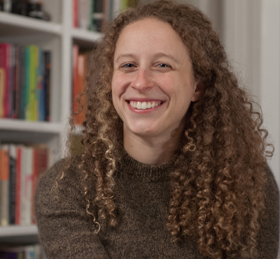 Emily Seife associate editor at Scholastic Press, has agreed to be our Guest Critiquer for October’s First Page winners. She works with award-winning authors such as Cynthia Lord, Philip Reeve, Daphne Benedis-Grab, James Proimos, and many others. She is an editor on the Infinity Ring multiplatform series, and is the author of The Hunger Games Tribute Guide. Emily is especially looking for: Young adult and middle grade fiction: stories with a strong voice and emotional core, contemporary humor, magical realism, mystery. She says she is not a good fit for: high fantasy, paranormal.
Emily Seife associate editor at Scholastic Press, has agreed to be our Guest Critiquer for October’s First Page winners. She works with award-winning authors such as Cynthia Lord, Philip Reeve, Daphne Benedis-Grab, James Proimos, and many others. She is an editor on the Infinity Ring multiplatform series, and is the author of The Hunger Games Tribute Guide. Emily is especially looking for: Young adult and middle grade fiction: stories with a strong voice and emotional core, contemporary humor, magical realism, mystery. She says she is not a good fit for: high fantasy, paranormal.
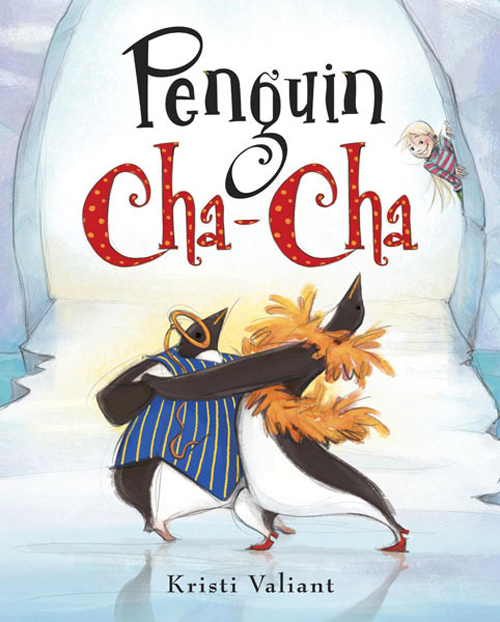
http://kathytemean.wordpress.com/2013/09/07/illustrator-saturday-kristi-valiant/
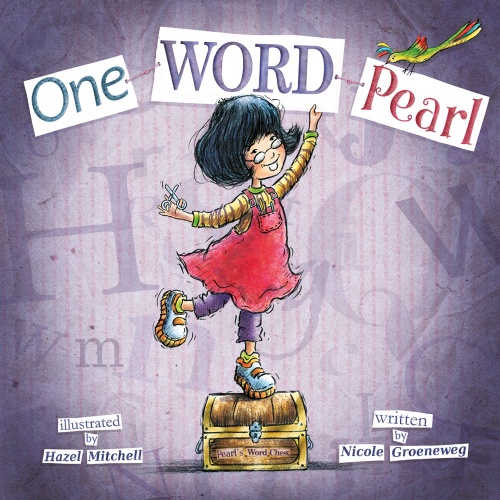
http://kathytemean.wordpress.com/2013/09/14/illustrator-saturday-hazel-mitchell-2/
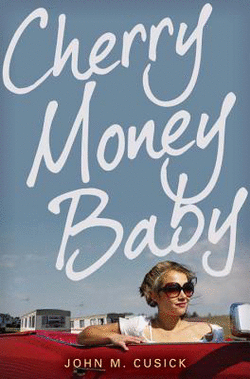 Click this for the original link for Book and Agent John Cusick’s Interview.
Click this for the original link for Book and Agent John Cusick’s Interview.
If you didn’t win, check back on Sunday for a chance to get your hands on Cherry Money Baby.
Winners please send me your physical address, so your book can be sent to you.
You can still leave a comment for a chance to win the following books:
Click this link for Dianne Ochiltree’s Firefly Night. Winner announced on Sunday.
Click this link for Pink Cupcake Magic written by Katherine Tegan and illustrated and given away by Kristin Varner. Have to Dec. 1st to leave a comment on this link.
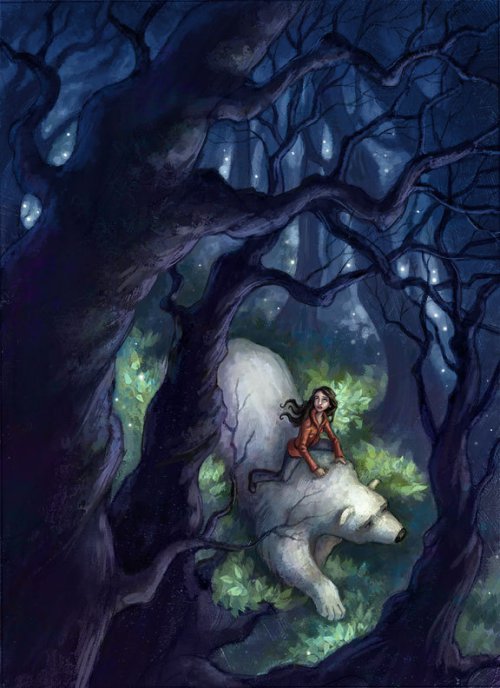
For writers who like using a picture prompt, you may use the above illustration by Shawna JC Tenney for inspiration. Shawna was featured on illustrator Saturday April 20th. http://kathytemean.wordpress.com/2013/04/20/illustrator-saturday-shawna-jc-tenney/
WRITERS Sending in a First Page: Please attach your double spaced, 12 point font, 23 line first page to an e-mail and send it to kathy(dot)temean(at)gmail(dot)com. Also cut and paste it into the body of the e-mail. Put “October First Page Critique” or “October First Page Picture Prompt Critique” in the subject line. Make sure you have your name on the submission, a title, and indicate the genre.
DEADLINE: October 24th
RESULTS POSTED: November 1st.
Talk tomorrow,
Kathy
Filed under:
opportunity Tagged:
dianne Ochiltree,
Editor Emily Seife,
First Page Critiques,
Free Fall Friday,
Hazel Mitchell,
John Cusick,
Katherine Tegan,
Kristi valiant,
Scholastic,
Shawna JC Tenney 


By: Kathy Temean,
on 9/24/2013
Blog:
Writing and Illustrating
(
Login to Add to MyJacketFlap)
JacketFlap tags:
authors and illustrators,
bio,
Children's Book Author,
dianne Ochiltree,
book give-a-way,
It's a Firefly Night,
Author,
Interview,
Picture Book,
Book,
Add a tag
 Dianne Ochiltree has been writing stories and poems since she was a child growing up in a small Midwestern town. Today, she is a nationally recognized author of books for the very young. Her picture book, LULL-A-BYE, LITTLE ONE has been a selection for the Dollywood Fourndation’s national literacy program, and her picture book, MOLLY BY GOLLY! The Legend of Molly Williams, America’s First Female Firefighter received the Florida Book Awards Bronze Medal in the Children’s Literature category in 2012. Her earlier books have been translated into foreign language and Braille editions as well as audio versions. For more information about Dianne and her books, go to http://www.ochiltreebooks.com. Dianne lives in sunny Sarasota, Florida with her husband, Jim, and the family pets.
Dianne Ochiltree has been writing stories and poems since she was a child growing up in a small Midwestern town. Today, she is a nationally recognized author of books for the very young. Her picture book, LULL-A-BYE, LITTLE ONE has been a selection for the Dollywood Fourndation’s national literacy program, and her picture book, MOLLY BY GOLLY! The Legend of Molly Williams, America’s First Female Firefighter received the Florida Book Awards Bronze Medal in the Children’s Literature category in 2012. Her earlier books have been translated into foreign language and Braille editions as well as audio versions. For more information about Dianne and her books, go to http://www.ochiltreebooks.com. Dianne lives in sunny Sarasota, Florida with her husband, Jim, and the family pets.
 Her books have appeared on several recommended reading lists nationwide, including the Bank Street College Children’s Book Committee ‘year’s best’, and the Dollywood Foundation’s national childhood literacy program, ‘imagination library’.
Her books have appeared on several recommended reading lists nationwide, including the Bank Street College Children’s Book Committee ‘year’s best’, and the Dollywood Foundation’s national childhood literacy program, ‘imagination library’.
IT’S A FIREFLY NIGHT is illustrated by Betsy Snyder who was featured last December on Illustrator Saturday. If you would like to see that post, here is the link: http://kathytemean.wordpress.com/2012/12/01/illustrator-saturday-betsy-snyder/
Dianne has agreed to give everyone a chance to win one of three signed copies of IT’S A FIREFLY NIGHT. All you have to do is leaves a comment to get their name in the hat one time. If you would like to collect more entries in the hat, you can increase your chances by do the following:
1 entry everything you tweet this link (One a day).
1 entry for putting this link on facebook
1 entry for putting up this post on your blog.
2 entries if you reblog this post.
5 entries if you talk about the book on your facebook page or blog.
Please come back and leave an update on what you did by Friday October 5th in the comment section, so I know how many times to put your name in the hat for the drawing. I will announce the winner on Sunday October 7th.
Here is the interview I had with Dianne.
I know you have been writing since you were a little kid, but how did you hone your writing skills as a serious writer?
Great question! First, I made the commitment to write something very day. Depending on the particular day, some days it was 20 pages and other days it was only notes on a future project. The important thing was to make the writing a daily priority. Second, I made a list of what I didn’t know about writing for young readers and the children’s publishing industry. (Initially, a very long list!) Then I set off on a crash course to gain the knowledge I needed to write effectively for this market. I read books, magazine articles, and blogs on the topics. I took a couple of in-person and online classes. Most important, I joined SCBWI. The first year in the business, I attended eight regional and national conferences, where the workshops and presenters shared valuable tips on the craft and business of writing for children. I networked with fellow beginning writers. I found experienced writers who generously offered me guidance from time to time. I joined two critique groups where I could not only bring my own writing skills up to speed, but also learn from evaluating other writers’ work. Oh yes, it ‘takes a village’ to raise a children’s writer!
Were the first things you wrote, poems?
Yes, little poems about pets and flowers and that sort of thing. Also scripts for puppet shows. I made hand puppets from paper lunch bags and construction paper. My third grade teacher let me do puppet shows for my book reports because I was so shy! Before learning to actually read or write, I drew little ‘picture books’ using recycled paper sheets , bound with punch holes and yarn.
Did you start out knowing that you wanted to writer for children?
Not at all. I just wrote things without thought about intended readership or publication at first. It was just for fun.
Have you done any other type of writing?
My first job was as an advertising copywriter. My first writing career, as staff writer and freelancer, was in marketing/advertising/public relations. I have written poems and personal essays for adult readers, too.
When did you get your first picture book published?
My first book for children, CATS ADD UP!, was published in 1998 as a title in the ‘Hello, Reader!’ series from Scholastic. This was especially exciting to be published by Scholastic, because when I was a kid, most of my reading material came from those monthly book club offerings.
How did that happen?
I’d applied for the Rutgers One-on-One Plus Conference with a writing sample, an early draft of that first published book, and was accepted. My mentor that day was Paula Danziger. Not only did she give me priceless writing advice…she introduced me to an editor at Scholastic who agreed to look at my manuscript once I’d made revisions based on her input.
Are all your picture books in rhyme?
No. All three of my ‘Hello Reader!” series titles are in prose, as is my 2012 Calkins Creek/Boyds Mills Press book, MOLLY BY GOLLY! The Legend of Molly Williams, America’s First Female Firefighter.
Do you have an agent? If not, would like to find one?
No, I do not currently have an agent. And YES, of course, I’d love to have representation. It’s not just the negotiation for the initial contract in which a literary agent makes a key difference—it’s the on-going interface with the publisher on issues such as subsidiary rights in which having an agent on your side can make a big impact.
Not counting your latest book, which book are you most proud of?
Now you’re asking me to name the equivalent of my favorite child—tough question! So, while I love all my books, I am proud of LULL-A-BYE, LITTLE ONE (G.P. Putnam’s Sons, 2006) for being on the Dollywood Foundation’s ‘Imagination Library’ list for many years running. Because of this, thousands of families with infants have received a free copy of the book in the mail for their own little ones. These are parents who could not otherwise afford books for their kids. Also proud that the ‘Molly’ book won the 2012 Florida Book Awards bronze medal in the children’s literature category.
Do you have a regular writing schedule?
The only regular thing about my writing schedule is that I write something each day: a journal entry, a blog post, or chunks of a manuscript. It’s all good.
I see you do yoga. Do you feel that helps you write better?
Yes, I’m a Yoga Alliance 200-hour RYT instructor and devoted lifelong learner. And yes, it helps tremendously. As an instructor or student, my observational skills need to be engaged at a high level. This also helps make writing shine, taking notice of all the details. There is a meditative state that practicing yoga and writing share. By connecting with your true self, or your creative self, your work on the mat and at the keyboard will exceed your expectations. There is also an element of non-judgment of effort and non-attachment to results that frees up a yoga practice and writing efforts alike. I believe so strongly in the corollary processes that I teach a ‘zen and the pen’ workshop from time to time.
Can you tell us the story and journey behind your new book, It’s a Firefly Night?
It’s been a long and happy journey with that manuscript. I think my first draft of the story dates to 2003. It was prompted by my memory of sharing ‘firefly nights’ with my own father. From him, I learned an appreciation of—and a respect for—the natural world. That’s a lesson as valuable today as it was in the 60’s. Catching fireflies on a summer night was one of the rare times I had one-on-one time with my father. My father passed away when I was 18 years old, so of course working creatively with any ‘daddy memory’ is a special pleasure for me. It has also been a joy to connect with that childlike sense of wonder while crafting this manuscript. My goal was to share the feeling of magical, barefoot, starry summer nights of long-ago with today’s kids. I also hope that the book inspires today’s parents to get out there and share some nature outings with their children.
What number of books does this book bring you up to now?
I think it’s 11.
Have any of your books been put out as an e-book?
Yes, some of my Scholastic books are now offered as an e-book. Both original Scholastic publications and picture books that were subsequently sold to Scholastic for paperback and other rights.
Do you have any thoughts on why some writer’s get published and others do not?
Some writers do the homework and some do not. Some writers can receive editorial input and utilize it effectively, some cannot. Some writers can handle rejection, others cannot. Some writers give up, others do not. The biggest difference? Published writers are not quitters.
Do you have any suggestions on how to market yourself to editors and publishers?
Simply, be professional. Know what they do or do not publish. Ask informed questions. Use appropriate communication channels for your queries and pitches. Only present your most polished work.
What are you working on now?
A book proposal for a juvenile biography, plus a narrative nonfiction picture book manuscript.
Do you have any words of wisdom for unpublished writers?
I’m not really qualified to give anything as profound as words of wisdom…but I will mention that it’s important to find out what makes your writing stand out from other authors, which is another way of saying what makes you unique, then go for it! Let your writing express your viewpoint on life, as well as your personality. You were called to be a writer because there is something you really need to say to young readers. Make that connection with every word on the page.
Thank you Dianne for sharing your time to answer todays, interview questions. I have your book and it is a great addition to my picture book collection and thank you for your generous offer to let three people win signed copies of your book.
Talk tomorrow,
Kathy
Filed under:
Author,
authors and illustrators,
bio,
Book,
Interview,
Picture Book Tagged:
book give-a-way,
Children's Book Author,
dianne Ochiltree,
It's a Firefly Night 


By: Kathy Temean,
on 3/18/2013
Blog:
Writing and Illustrating
(
Login to Add to MyJacketFlap)
JacketFlap tags:
Tips,
Advice,
Process,
authors and illustrators,
How to,
demystify,
dianne Ochiltree,
Molly By Golly,
How to Set up a Critique Group,
Add a tag
 Ask anyone who’s been in a writers critique group, and you will hear that there is no better way to hone your craft. Ideally, a critique group gets you where you want to go as a children’s writer. But what if you can’t find a group to go to?
Ask anyone who’s been in a writers critique group, and you will hear that there is no better way to hone your craft. Ideally, a critique group gets you where you want to go as a children’s writer. But what if you can’t find a group to go to?
Start one of your own. I know, it’s a little scary. But it’s worth it. (Trust me: I’ve been in critique groups since 1995. All that critiquing helped me reach some major publishing milestones!) So here goes, a few pointers from my own experience:
GET THE WORD OUT.
The best way to let like-minded writers know that you’re starting a group is to contact the SCBWI critique group coordinator listed on your regional chapter’s website and/or newsletter. This chapter volunteer collects names of ‘critique seekers’, and sorts them according to geographic location. If there is not a group in your area open to new members, he or she shares your contact information with interested writers who live and work in the same area so you can network on your own. Another route is to contact local community education programs and universities offering ‘writing for children’ courses, and ask the instructors to make an announcement to students about your intention to start a critique group.
GATHER ESSENTIAL FACTS ABOUT POTENTIAL MEMBERS.
Start a file with everyone’s email, phone number, address, websites. Ask basic questions: what genres and for which readerships do you write? When can you meet—mornings, afternoons, or evenings—and which days of the week? How often do you want to have meetings: once a month, twice a month or weekly? Where are you located and how far are you willing to travel for the meetings? Do you want to read/critique manuscripts at the meetings or outside of the meetings? Do you want to share marketing information at the meetings or focus only on the craft inside of the critique group? Answers to these questions will assist you in structuring the group for maximum mutual benefit, and get things off to a strong start.
FIND YOUR MEETING SPACE.
This is a matter of choice and luck. The first place to look for free meeting space is your local library. Most have a community room for small groups, and if there is room, you may be able to schedule the space up to a year at a time. Other options include bookstores, coffee houses, and members’ homes. As long as the venue is comfortable, relatively quiet and convenient to all members, your location will work well.
SET YOUR FIRST MEETING.
Set the date, gather members and get going. The agenda for a first meeting should be to discuss and set ground rules, and to simply get to know one another a bit. Sample work might be read to the group so others can get an idea of your writing ‘personality’, but no real critiques should be done at this first gathering. You might hand out tips on critiquing the work of others, and a checklist of literary elements to look for in a manuscript. There’s a lot of information about the critique process on various websites, as well as entire books on the subject. Two excellent books are: HOW TO START AND RUN A WRITERS’ CRITIQUE GROUP by Carol J. Amato; and THE WRITING GROUP BOOK: CREATING AND SUSTAINING A SUCCESSFUL WRITING GROUP by Lisa Rosenthal.
KEEP IT GOING. Encourage each writer to take their work up a notch with upbeat yet honest comments. Listen with patience and respect. Motivate one another. Commiserate and celebrate together. Keep up the good work.
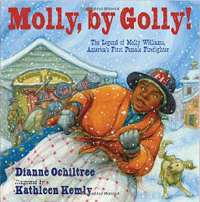 Submitted by
Submitted by
Dianne Ochiltree, www.ochiltreebooks.com
Author of MOLLY, BY GOLLY! The Legend of Molly Williams, America’s First Female Firefighter, 2012 Bronze Medal winner, Children’s Literature, Florida Book Awards
Talk tomorrow,
Kathy
Filed under:
Advice,
authors and illustrators,
demystify,
How to,
Process,
Tips Tagged:
dianne Ochiltree,
How to Set up a Critique Group,
Molly By Golly 

<!--[if gte mso 9]>
0
0
1
891
5084
wordswimmer
42
11
5964
14.0
<![endif]-->
<!--[if gte mso 9]>
Normal
0
false
false
false
EN-US
JA
X-NONE
<![endif]--><!--[if gte mso 9]>

By: Kathy Temean,
on 5/15/2012
Blog:
Writing and Illustrating
(
Login to Add to MyJacketFlap)
JacketFlap tags:
Author,
Tips,
Writing Tips,
Advice,
Process,
article,
Writer's Block,
How to,
demystify,
dianne Ochiltree,
Add a tag
 I admit it. This winter, I worked my way
I admit it. This winter, I worked my way
through a long, chilly case of writer’s block. Using the term ‘block’ to describe what I’d been going through the past few months seemed appropriate, because in my mind I pictured it, literally, as a block of ice. I felt trapped inside, frozen: unable to summon the words or images, afraid to put pen to paper.
Because writers slide into a creative block one day at a time, so must we dig our way out of it, stepby-step. Here are a few of the ways to chip away at writer’s block:
Inspirational bedtime reading. Choose whatever type of reading material is most inspiring to your own creative process: Newbery Award winners? Published works from authors whom you could learn a technique or two? An inspirational writing exercise book such as Julia Cameron’s The Artist’s Way or Natalie Goldberg’s Writing Down the Bones? Trust your instincts and choose the literary food you feel will best nourish your creativity.
Write daily journal pages or do brief writing exercises. Either of these activities will get your pen skating across the paper or your fingers dancing on the keyboard. Knowing that it’s ‘just for practice’ will help free up your words. It doesn’t matter what time of day you decide to stretch your creative muscles, as long as you do it faithfully.Writing something daily will help ease you back into your old work routine.
Go back to writing ideas down in a notebook. When I’m blocked and not writing manuscripts, I don’t write down ideas that pop into my head, either. I glumly think: What’s the use? and let them go. What a mistake! Don’t let discouragement feed your writer’s block. By writing down ideas, you encourage yourself to continue to think in full creative mode. Remind yourself as you make each entry that you’re merely experiencing a temporary glitch in your writing life, which will soon go away.When it does, you’ll be ready with plenty of ideas and inspirations.
Break down large writing projects into smaller blocks and do them in small pieces of time. While this is a useful strategy at any time in my creative life, I find this crucial when I’m having trouble getting started or maintaining momentum. For example, when made vulnerable by writer’s block, the mere thought of attacking that HUGE book manuscript or magazine article shuts me down. I find it easier to break down a story into smaller units and attack it that way. Somehow, writing in ‘baby steps’ helps me overcome any fear of failure and keeps me on task. Like sewing a quilt, each small piece builds on the other, taking shape over a course of days until voila, the blanket is done.
Although writing your manuscript ten minutes at a time may not be ideal, it is preferable to not writing it at all!
Stop being a perfectionist about when and how you can create. Most people imagine a writer communes with a Muse in peaceful seclusion, sitting in a comfy parlor with dozing cats at our feet and a cup of herbal tea in hand. Anyone who has actually written knows that this is a myth…at least for 99% of us!
But the idea is so appealing that when we’re weakened by writer’s block, we talk ourselves into believing that we really can’t produce prose or poetry unless all the planets in our creative universe are in perfect alignment.To prove to myself that this notion is nonsense, I challenge myself to write something—anything—under the worst circumstances possible: with a blaring television in the background, in my dentist’s waiting room, in the grocery store check-out line, between the wash and rinse cycle at the laundromat. Not everything written is usable, of course, but you’ll be surprised at how often these
 Our Guest Critiquer for January is Author Dianne Ochiltree. She is the author of nine published children’s books and does freelance editorial work.
Our Guest Critiquer for January is Author Dianne Ochiltree. She is the author of nine published children’s books and does freelance editorial work.
Some readers—especially members of NJ-SCBWI—may already know today’s guest. Dianne has been a faculty member for chapter conferences several times, presenting writing workshops on a variety of topics related to children’s publishing as well as providing one-on-one critiques. Her books have appeared on several recommended reading lists nationwide, including the Bank Street College Children’s Book Committee ‘year’s best’, and the Dollywood Foundation’s national childhood literacy program, ‘imagination library’.
Dianne Ochiltree has a new book coming out this fall titled, MOLLY, BY GOLLY! It is being published by Calkins Creek, an imprint of Boyds Mills Press. It is a re-telling of the legend of Molly Williams, America’s first female firefighter, and is illustrated by Kathleen Kemly and was edited by Carolyn Yoder.
Blue Apple Books aquired a counting picture book for the very young, written by Dianne titled, GOODNIGHT, FIREFLY, illustrated by Betsy Snyder. The release date has not been set.
You can visit Dianne at: www.Ochiltreebooks.com
We only have two first Pages this month. Again, I received more, but all the rest did not use the picture prompts. Here is the first one.
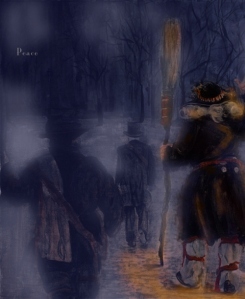 UNTITLED by Su Lael
UNTITLED by Su Lael
Under my wool sweater, beads of sweat trickled as I drove my short legs to match my father’s stride, fitting my booted feet in his vast footprints, making the crystals of snow squeak. My breath condensed in frozen pellets on my scarf, wrapped tightly around my nose and mouth. As dark shadows stretched out their fingers, the woods exhaled cool and deep air which stung my eyes and numbed my fingers. I beat my gloved fingers against my thighs and curled them back in my sleeves. The tramp and squeak of booted feet treading the snow was the only sound. The rector and the altar guild crossed the street and bent their steps into the deeper snow under the trees and off the path, where the shadows deepened. I had never been allowed out to cut the evergreen boughs in the woods during advent.
The baby and my mother remained at home in the light and safety of the kitchen. Now, no doubt, my mother was sifting flour into her favorite glass bowl as the butter slowly melted on the stove. My little brother slid the chunk of butter around, spearing the diminishing block with a fork, around and around again. But I strode on in the cold and the dark. The procession drew ahead of me. I paused, pressing my cold fingers against my neck as I drew first one and then the other hand from my frozen gloves. As the lights receded, I felt as though I were in a cave watching the miner’s light bob and shrink as the darkness, an active force, pressed round me. I roughly forced my reddened hands back in my gloves, and, half running lurched after my father. The men had halted in the grove of fir trees. The rector intoned the familiar words of the prayers. I pressed against my father’s side, finding comfort in his sturdy bulk. I gazed up through branches to the night sky above. The vast bowl opened up, the stars wheeling in their slow march across the sky. My father’s arm circled my shoulder pulling me close. When I tilted my head up, I could see the cloud of his breath. “Well done my little one” he whispered.
Criti

By: Kathy Temean,
on 4/13/2011
Blog:
Writing and Illustrating
(
Login to Add to MyJacketFlap)
JacketFlap tags:
Advice,
ebooks,
authors and illustrators,
Distribution,
children writing,
earn money,
need to know,
demystify,
dianne Ochiltree,
Telemachus Press,
Add a tag
 Emerging Leader in the eBook and Print On Demand Markets
Emerging Leader in the eBook and Print On Demand Markets
Interviewed by DIANNE OCHILTREE, www.ochiltreebooks.com
 The back story: Telemachus Press is today’s equivalent of the classic ‘private press publisher’. Their attention to detail has earned the company its reputation for quality and value. Telemachus Press authors and illustrators can bring out-of-print titles or original work to the marketplace in all formats at once: eBook, paperback and hardback. Recently, I sat down with Claudia Jackson, founder and partner of Telemachus Press, to find out more about the company, its products and the creative community it serves.
The back story: Telemachus Press is today’s equivalent of the classic ‘private press publisher’. Their attention to detail has earned the company its reputation for quality and value. Telemachus Press authors and illustrators can bring out-of-print titles or original work to the marketplace in all formats at once: eBook, paperback and hardback. Recently, I sat down with Claudia Jackson, founder and partner of Telemachus Press, to find out more about the company, its products and the creative community it serves.
Q: Why did you decide to establish Telemachus Press?
I’m neither a writer nor do I have any desire to become an author of popular books for the masses! I gave that up many years ago after writing and publishing several software training manuals (before they widely existed). Since then, I’ve spent many years as a computer consultant specializing in desktop publishing and printing. Recently, I found myself in a strange predicament where I had to publish a book for a friend. OK, it was my husband, Steven H. Jackson, who wrote a murder mystery titled, “Death of a Cure.” It was a tough decision that we jointly made. (Do you wait for a literary agent to sell your book to a publisher or should you publish it yourself?) I already had the background, the skill set and the software – all of the tools to get the job done. What I lacked at that time, however, was a working knowledge of the process that takes a completed manuscript and turn it into a novel or non-fiction work. Countless days and nights were spent reading, researching, studying opinions (everybody has one) and comparing the various options available.
There are many publication services on the Internet and they continue to grow in number every day. Costs can be high, complicated and very confusing. Many of the business models employed by these author services companies were anything but transparent value propositions. To be honest, there was a lot of “bait and switch” leading the author to pay and pay without any upfront, full disclosure. Be all that as it may, it doesn’t take long before the brain is overloaded with everybody’s advice, not to mention having to weed through a multitude of Internet scams. It proved to be a long and frustrating experience, not unlike the experiences read about in blogs and forums as other authors travel down this same road.
Not being one to sit around and wait for things to happen, I woke up one day and decided to not only publish this book, but to go all the way and start a publishing company focused on providing all the technical publishing services a self-published author needed in a simple and fair model.
Telemachus Press has come a long way since that first book. We have expanded our resources and continue to build an excellent network of people who not only care about the job, but care about it getting done professionally. Our references are our most important asset! At Telemachus Press, you will have someone to actually talk to, and, more importantly, someone who will not only care about the finished product, but take responsibility for it as well.
We are an advocate for you, the author!
Q: What makes your publishing company different from the many other publishers in today’s marketplace?
Full transparency to the author. We are a work-for-hire
 Emily Seife associate editor at Scholastic Press, has agreed to be our Guest Critiquer for October’s First Page winners. She works with award-winning authors such as Cynthia Lord, Philip Reeve, Daphne Benedis-Grab, James Proimos, and many others. She is an editor on the Infinity Ring multiplatform series, and is the author of The Hunger Games Tribute Guide. Emily is especially looking for: Young adult and middle grade fiction: stories with a strong voice and emotional core, contemporary humor, magical realism, mystery. She says she is not a good fit for: high fantasy, paranormal.
Emily Seife associate editor at Scholastic Press, has agreed to be our Guest Critiquer for October’s First Page winners. She works with award-winning authors such as Cynthia Lord, Philip Reeve, Daphne Benedis-Grab, James Proimos, and many others. She is an editor on the Infinity Ring multiplatform series, and is the author of The Hunger Games Tribute Guide. Emily is especially looking for: Young adult and middle grade fiction: stories with a strong voice and emotional core, contemporary humor, magical realism, mystery. She says she is not a good fit for: high fantasy, paranormal.

 Click this for the original link for Book and Agent John Cusick’s Interview.
Click this for the original link for Book and Agent John Cusick’s Interview. 



 Dianne Ochiltree has been writing stories and poems since she was a child growing up in a small Midwestern town. Today, she is a nationally recognized author of books for the very young. Her picture book, LULL-A-BYE, LITTLE ONE has been a selection for the Dollywood Fourndation’s national literacy program, and her picture book, MOLLY BY GOLLY! The Legend of Molly Williams, America’s First Female Firefighter received the Florida Book Awards Bronze Medal in the Children’s Literature category in 2012. Her earlier books have been translated into foreign language and Braille editions as well as audio versions. For more information about Dianne and her books, go to
Dianne Ochiltree has been writing stories and poems since she was a child growing up in a small Midwestern town. Today, she is a nationally recognized author of books for the very young. Her picture book, LULL-A-BYE, LITTLE ONE has been a selection for the Dollywood Fourndation’s national literacy program, and her picture book, MOLLY BY GOLLY! The Legend of Molly Williams, America’s First Female Firefighter received the Florida Book Awards Bronze Medal in the Children’s Literature category in 2012. Her earlier books have been translated into foreign language and Braille editions as well as audio versions. For more information about Dianne and her books, go to  Her books have appeared on several recommended reading lists nationwide, including the Bank Street College Children’s Book Committee ‘year’s best’, and the Dollywood Foundation’s national childhood literacy program, ‘imagination library’.
Her books have appeared on several recommended reading lists nationwide, including the Bank Street College Children’s Book Committee ‘year’s best’, and the Dollywood Foundation’s national childhood literacy program, ‘imagination library’. Ask anyone who’s been in a writers critique group, and you will hear that there is no better way to hone your craft. Ideally, a critique group gets you where you want to go as a children’s writer. But what if you can’t find a group to go to?
Ask anyone who’s been in a writers critique group, and you will hear that there is no better way to hone your craft. Ideally, a critique group gets you where you want to go as a children’s writer. But what if you can’t find a group to go to? Submitted by
Submitted by I admit it. This winter, I worked my way
I admit it. This winter, I worked my way  Our Guest Critiquer for January is Author Dianne Ochiltree. She is the author of nine published children’s books and does freelance editorial work.
Our Guest Critiquer for January is Author Dianne Ochiltree. She is the author of nine published children’s books and does freelance editorial work. UNTITLED by Su Lael
UNTITLED by Su Lael Emerging Leader in the eBook and Print On Demand Markets
Emerging Leader in the eBook and Print On Demand Markets The back story: Telemachus Press is today’s equivalent of the classic ‘private press publisher’. Their attention to detail has earned the company its reputation for quality and value. Telemachus Press authors and illustrators can bring out-of-print titles or original work to the marketplace in all formats at once: eBook, paperback and hardback. Recently, I sat down with Claudia Jackson, founder and partner of Telemachus Press, to find out more about the company, its products and the creative community it serves.
The back story: Telemachus Press is today’s equivalent of the classic ‘private press publisher’. Their attention to detail has earned the company its reputation for quality and value. Telemachus Press authors and illustrators can bring out-of-print titles or original work to the marketplace in all formats at once: eBook, paperback and hardback. Recently, I sat down with Claudia Jackson, founder and partner of Telemachus Press, to find out more about the company, its products and the creative community it serves.
Another VERY intriguing picture prompt, Kathy And a wonderful opportunity with Emily. Again, I WANT to participate. I hope I can! Thank you for doing this all the time. It’s one of my favorite things!
And a wonderful opportunity with Emily. Again, I WANT to participate. I hope I can! Thank you for doing this all the time. It’s one of my favorite things!
Reblogged this on Darlene Beck-Jacobson.